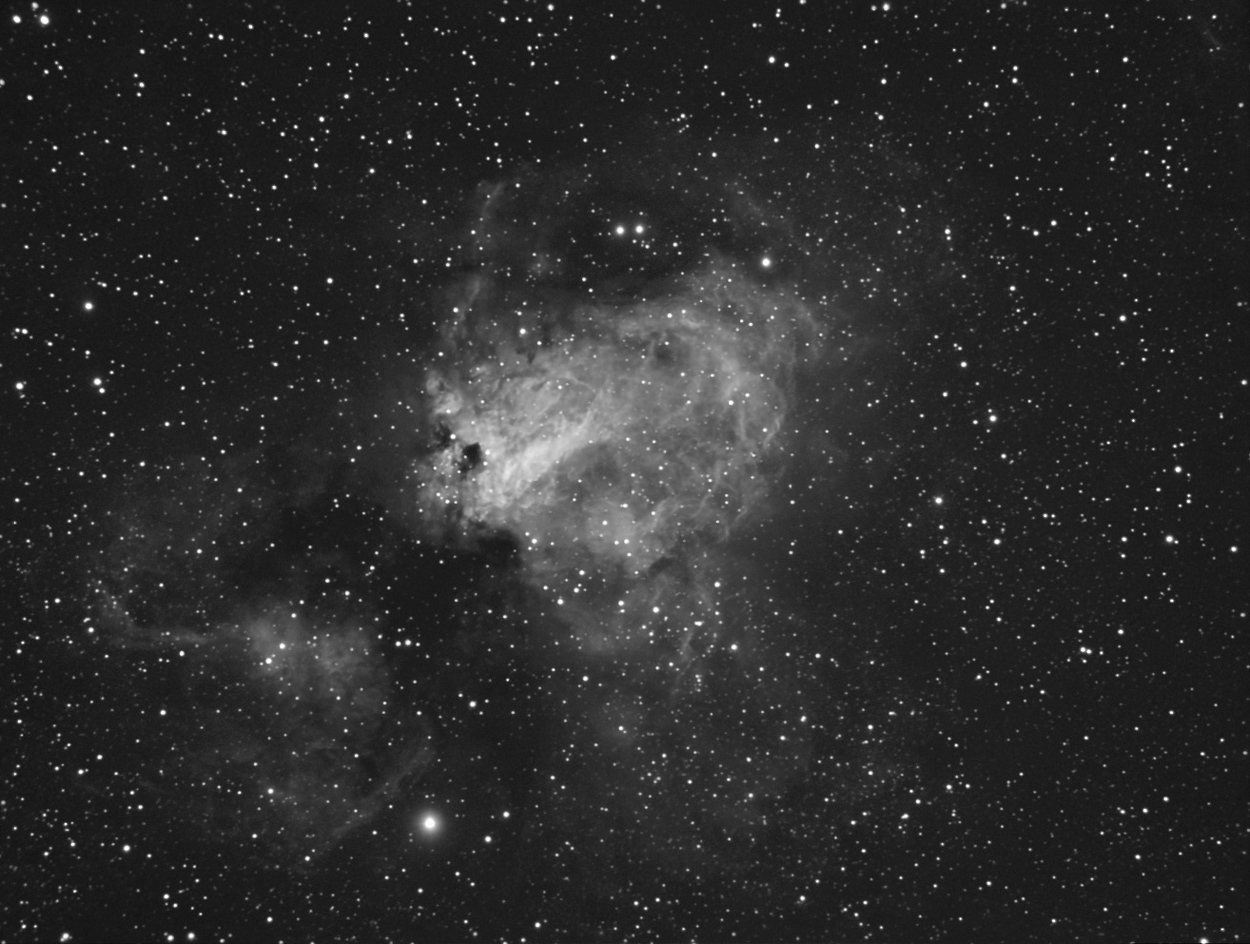
| HOME |
M 17 - THE SWAN NEBULA IN Ha LIGHT
CLUSTER ASSOCIATED WITH NEBULOSITY IN SAGITTARIUS
(ra: 18.20,8/ dec -16:11)

July 2009, Home backyard in Martínez - Buenos Aires, Argentina
DATA
TYPE: Cluster associated with Nebulosity
Apparent Magnitude: 6
Apparent Diameter: 46 arc minutes
DISTANCE: 6000 lights years
IMAGE INFORMATION
SCOPE: William Optics Zenithstar 66 working at f6 (no fr/ff used)
CAMERA: SXVF H9
GUIDING: Celestron C8 SCT working at f6 (roughly)
IMAGE ACQUISITION: AstroArt 3.0 - Control Interface 3.72 plug in
FILTERS: IDAS LPS II - Astronomik Ha 6 nm - Atik Filter Wheel
SKY CONDITIONS: urban skies - transparency and seeing regular
EXPOSURES: LHa (45,100)
PROCESSING: Images Plus Sigma Median Combine Calibration , Photoshop CS2
OBJECT DESCRIPTION AND IMAGE SESSION
M17 also called the Omega Nebula, because of the Greek letter shape. It can be found quite easily by locating the giant star Gamma Scuti of Magnitude 4.7. M17 is just at 2 degrees south west. The Swan Nebula is a star forming region and as difference with M16 the stars are covered by the nebula. The real colour of the cloud is reddish with some pink colouration. This colour comes from the hot hydrogen gas which is exited to shine by the hottest stars within the nebula. M17 also contains significant dark dust material particularly in the internal arc (neck of the swan) visible in the photograph.
It was discovered by Philip Loys de Chéseaux a Swiss Astronomer and Mathematician. Charles Messier independently discovered and catalogued in June 1764
(*) Source Seds